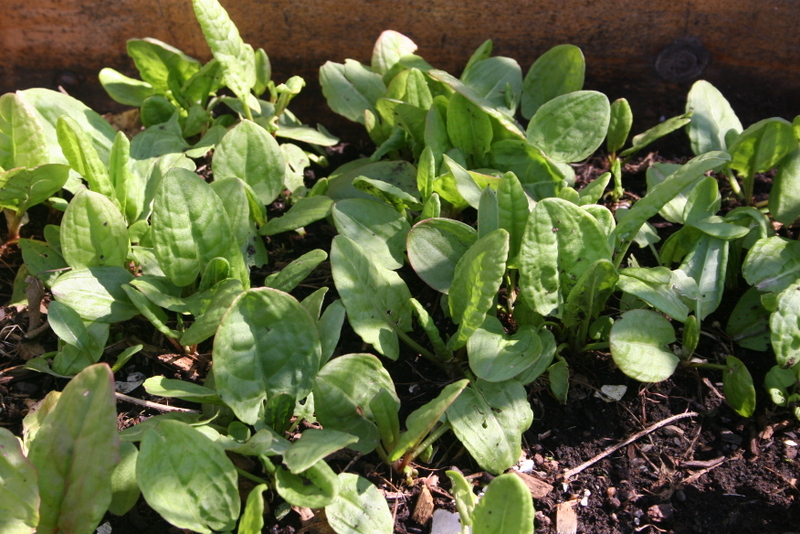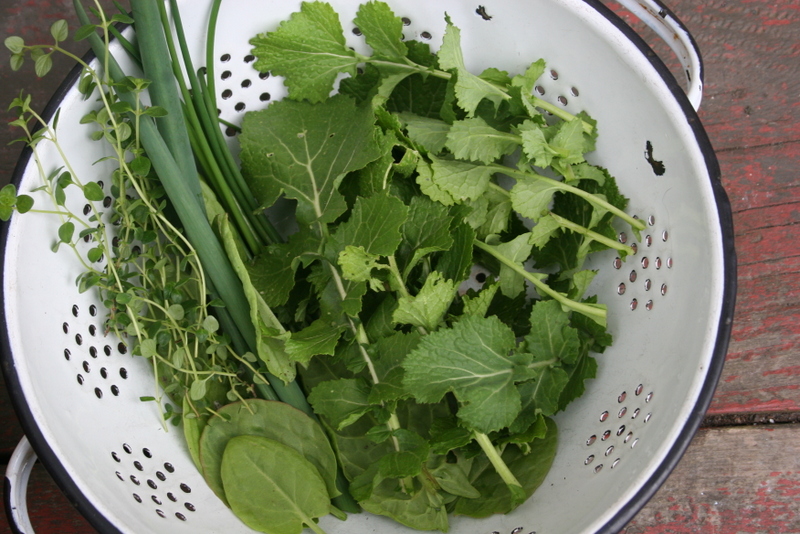If you ask any food gardener who is also a parent why they grow veggies, chances are they'll answer, "I want my children to know where their food comes from." We all love teaching our kids the joy of planting and picking and eating their own food. It's a science project, an artistic endeavour, an exercise in patience, a lesson in nurturing, and a way to burn off crazy kid energy (plus, having them help you hand-pollinate squashes could just form the basis for that big where-do-babies-come-from talk when the time comes). But behind every parent's wish to empower their children with horticultural knowledge is another simple desire: that our kids just eat their freakin' vegetables!
My eldest child, who is now 8 1/2, has always been what you would call a "good eater." She has her taste preferences - she doesn't like peppers or mushrooms, but overall, she's cool with veggies. Brussels sprouts, sunflower shoots, sorrel leaves, beets, she'll eat the lot of it. If I had never had another child, I would probably be insufferably smug, thinking that it was my superior parenting, my attention to foodie detail, and my excellent role modelling that made her this way.
There's nothing like a second child to teach you a little humility. My 3 1/2 year old is that kid, the one who only likes food in the beige-to-faux-cheddar-orange colour range. He will eat corn on the cob in season, but he's very picky about quality. He'll eat strawberries on occasion, but only if they're "fixed," which means "not cut up." Sometimes he'll nibble the tops off some steamed broccoli, if he's being an elephant and the broccoli is a tree, but he has to get down on the floor to do it. Frozen peas (while still frozen), tinned peaches, applesauce, maybe half a banana at a time... and that's about it.
The littlest guy, who just turned 2, is happy to eat nothing but raw fruit, and I'm happy to let him do it, so long as I can sneak a little protein into him in the form of yogurt or peanut butter. Cooked vegetables are pretty much always rejected, and he's still too young for most crunchy raw veggies to not pose a choking hazard. So... more frozen peas. Yeah.
I can't blame them for being fussy. Most of the imported produce we get here throughout the year tastes like wet cardboard. We grownups have the strength of will to force down any old food if someone can convince us it's good for us. Kids are more elemental than that. They want their food to taste good, and aren't about to waste time on anything that doesn't meet their standards.
So thank goodness for garden-fresh summer produce, which my kids, no matter how picky, will scarf down happily and proudly.
Not all of it, of course. They aren't impressed by my bronze fennel or my garlic scapes. They don't care whether I'm attempting to grow eggplants this year, or about my seven varieties of basil. Lovage and lemon balm? Pffft.
But there are veggies that always go over super well. Here are my kids' favourites in the garden:
- Peas and beans. I'm growing a ridiculous number of beans this year, because I know they'll get eaten, either right away, or over the winter if I blanch and freeze then. The peas don't even make it into the house most of the time, being devoured straight off the vine. Both crops grow quickly, and the seeds are big, which makes planting them gratifying for little, impatient people. Also, my kids like pea shoots, which grow fine indoors or in a shady spot in the garden.
- Tiny tomatoes. I'm trying "Hundreds and Thousands" and "Hahms Gelbe Topftomate" at my house this year. Miniature veggies seem to go over extra well with miniature humans. My youngest can easily polish off a pint of grocery-store cherry tomatoes if I turn my back, so I'm going to put these up on a shelf, and I'm hoping that the extra sweetness and cuteness of homegrown tomatoes will encourage my middle guy to eat them, too.
- Edible flowers. I'm not sure whether edible flowers have much of a nutritional profile, but they're fresh and they grow, so I figure they must be good. Weirdly, it's my middle guy who loves these the most. I let the edible wildflower Dame's Rocket (Hesperis matronalis) grow wherever it springs up in the back yard. I also grow violas and violets, calendula, nasturtium, mallows, and tuberous begonias for munching on. Herb flowers like chives and oregano are tasty in salads, as are flowers from arugula, Chinese broccoli, and anything else in the cabbage family. These flowers are all excellent for attracting pollinators and other beneficial insects, so they're educational as well as delicious.
- Radishes. My eldest likes the roots, my middle guy enjoys the young thinnings, and I like the seed pods. The little guy is indifferent, but he may come around.
- Fancy lettuce. I'm hoping that freckled leaves and curly red ones will encourage the consumption of salad. Fingers crossed. My kids all like raw spinach from the garden, too, so I'm growing some regular spinach and some with red stems.
What my kids like and what anyone else's kids like may be totally different. My guys don't get excited about growing carrots; the tiny seeds, the slow germination, and the summer-long wait make carrots less of a thrill than I would have thought (I still grow a few, though). My kids like planting zucchini, with its big, easy-to-handle seeds, but they're not all that interested in eating it. I'm not holding my breath for them to go crazy over the parsnips and kale. More for me, I figure. Who knows, though? Perhaps this will be the year that my children and I sit down to a big plate of steamed rapini together. Or maybe they'll at least try it.
(If you're looking for a great book about growing veggies with kids, I've found The Family Kitchen Garden really useful. It's a British publication, so the planting and harvesting dates are a little different from ours, but it is very well-written, funny, and realistic.)














